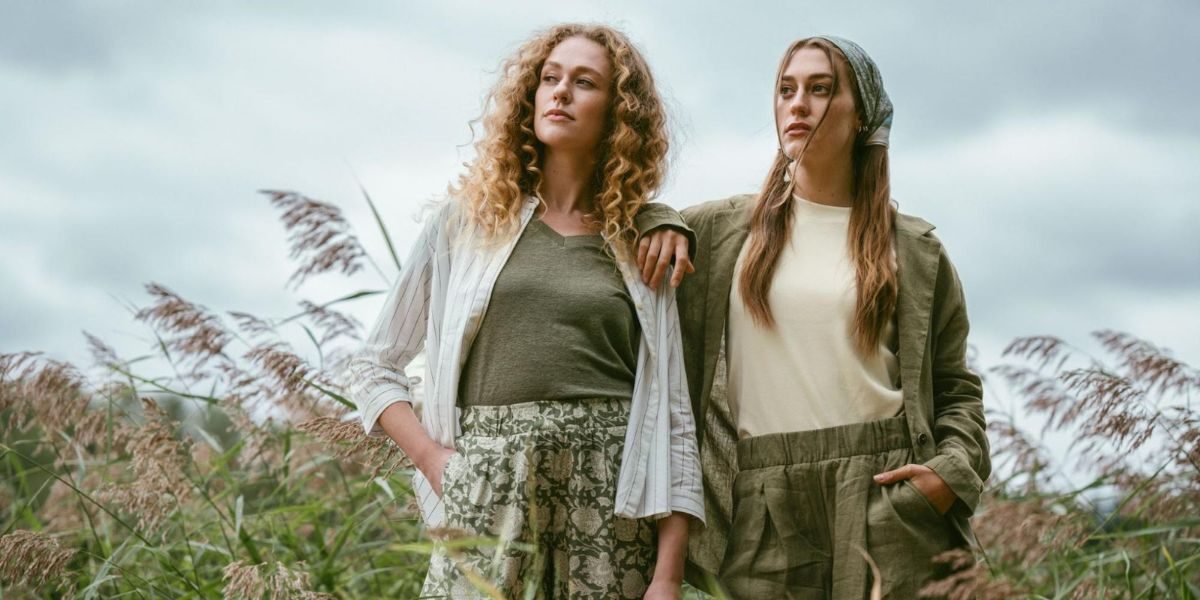By: Andrea Winters
In a small garage in Bavaria in 1985, a modest operation began producing organic socks. This was decades before “sustainable fashion” entered the mainstream lexicon, before social media influencers posed in “eco-friendly” outfits, and before major brands began repositioning themselves as advocates for environmental responsibility. The operation was LIVING CRAFTS, and what started as a niche business selling simple organic textiles has grown into what many consider one of the authentic success stories in sustainable fashion.
While the fashion industry now frequently produces sustainability reports and green marketing campaigns, LIVING CRAFTS has spent nearly four decades steadily developing a business model that places environmental and social responsibility at its core.
“Over the past forty years, we have remained committed to a single goal – offering textiles that respect both people and the environment,” says Frank Schell, Managing Director of LIVING CRAFTS. “We believe sustainability should not be an exception but a fundamental practice.”
From Garage to Global Presence
LIVING CRAFTS’ origin began with a strong belief that clothing production shouldn’t harm the planet or exploit workers. This guiding principle has shaped the company’s decisions for four decades, from sourcing materials to selecting manufacturing partners.
What began as a small garage operation selling organic socks has grown into a comprehensive supplier of environmentally friendly textiles, with annual revenue reportedly reaching €12 million and year-over-year growth averaging 15%. Today, the company offers everything from seasonal clothing and underwear to outerwear and home textiles such as bed linen, towels, and accessories.
Throughout this growth, the company has maintained its headquarters in Selbitz, Bavaria, where product development, administration, warehousing, and shipping operations take place. Despite its local roots, LIVING CRAFTS now serves approximately 200,000 customers and maintains a strong presence in organic shops throughout Europe.
What makes this story notable isn’t just the company’s longevity but its growth trajectory in a notoriously difficult industry. LIVING CRAFTS suggests that genuine sustainability can be commercially viable without compromising principles.
Beyond the Green Façade

The sustainable fashion market could reach $33.1 billion by 2033, growing at a significant CAGR of 22.9%. These numbers reflect increasing consumer awareness about the environmental impact of fast fashion, an industry widely regarded as one of the world’s largest polluters.
But this growing market has created a paradox: as sustainability becomes more valuable as a selling point, it becomes increasingly difficult for consumers to distinguish between real commitment and clever marketing.
Many brands highlight a single “green” initiative, such as using recycled materials in a small percentage of their products, while continuing less sustainable practices elsewhere in their supply chain. Others employ vague terminology like “environmentally conscious” without providing clear evidence to support these claims.
LIVING CRAFTS takes a different approach. Rather than relying on marketing to create a sustainable image, the company integrates sustainability into every aspect of its production process.
“Sustainability is not just about materials,” the company explains. “It involves responsible production, fair working conditions, and encouraging more mindful consumer behavior. The industry still has a long way to go, but we aim to advocate for meaningful progress.”
The GOTS Difference
At the core of LIVING CRAFTS’ credibility is its consistent adherence to the Global Organic Textile Standard (GOTS), one of the industry’s respected sustainability certifications. Unlike many competitors who may obtain certification for a limited “eco collection,” LIVING CRAFTS applies these standards across its entire product range.
GOTS certification isn’t a simple checkbox; it’s a rigorous framework that regulates the entire production process from raw material to final product. For textiles to qualify, they must contain at least 70% certified organic natural fibers grown without synthetic pesticides, insecticides, herbicides, or genetically modified organisms.
The standard also prohibits toxic heavy metals, formaldehyde, and functional nano-particles in dyes and auxiliaries. Accessories cannot contain PVC, nickel, or chromium. Every business in the supply chain must demonstrate environmental management, including wastewater treatment, and document water and energy consumption.
Perhaps most importantly, GOTS certification extends beyond environmental concerns to include social criteria: fair remuneration, regulated working hours, health and safety protections, and prohibitions against harassment, discrimination, forced labor, and child labor.
For LIVING CRAFTS, obtaining GOTS certification wasn’t about changing practices to meet new standards—it was about formalizing the principles that had long guided the company.
The Global-Local Balance
One of the most challenging aspects of sustainable fashion is balancing global supply chains with environmental responsibility. LIVING CRAFTS has developed a unique approach to this challenge, maintaining its headquarters, product development, administration, warehousing, and shipping operations in Selbitz, Bavaria, while working with manufacturing partners in Lithuania, Turkey, India, and occasionally Germany.
This model allows the company to maintain quality control and reduce unnecessary transportation while accessing specialized production capabilities worldwide. Each manufacturing partner must adhere to fair trade labor standards and meet strict requirements for worker safety, wages, and environmental practices.
The company’s commitment to carbon neutrality extends throughout this global network. LIVING CRAFTS actively works to reduce emissions during transportation and production processes while offsetting unavoidable carbon emissions through partnerships with sustainability initiatives. In recent years, they’ve also transitioned to plastic-free, biodegradable packaging materials.
The Future of Authentic Sustainability

As LIVING CRAFTS celebrates its 40th anniversary, the company faces both opportunities and challenges. The growing market for sustainable fashion presents expansion possibilities but also brings increased competition, including from brands that may not match LIVING CRAFTS’ level of commitment to environmental and social responsibility.
The company’s response has been to focus more on transparency and education rather than marketing. Its website provides detailed information about materials, supply chains, and certifications, enabling consumers to make informed choices. This approach reflects a core belief that educated consumers will recognize and value authentic sustainability.
LIVING CRAFTS aims to expand sustainable practices beyond apparel while maintaining its core values. The company’s four decades of experience suggest that businesses can balance market realities with environmental and social priorities.
In an industry increasingly characterized by greenwashing and superficial commitments to sustainability, LIVING CRAFTS offers something different: a demonstrated business model that shows how genuine environmental and social responsibility can contribute to lasting commercial success. The secret, it seems, isn’t really a secret at all—it’s simply the consistent application of principles that put people and planet on equal footing with profit.

















